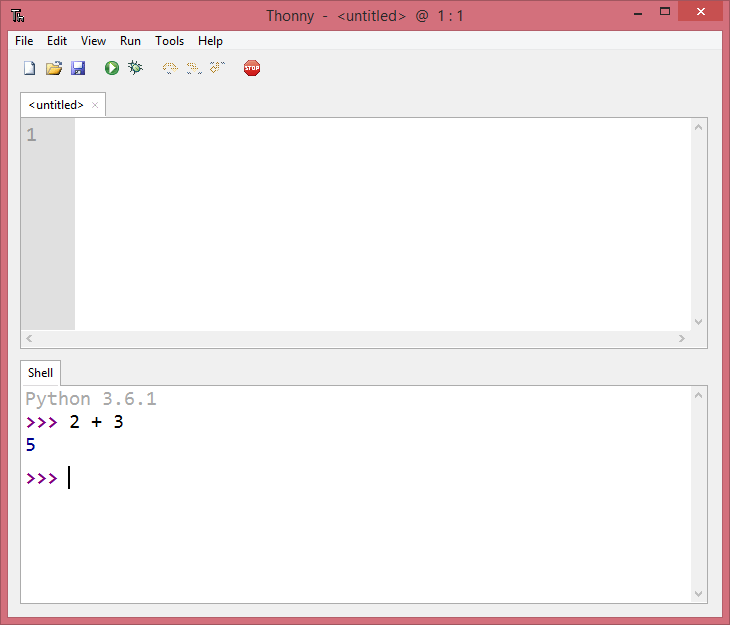
Enter the following code, make sure you tap Enter after each line.

#Thonny shell new line code
I recommend you to do the same but feel free to experiment. In this step, you will use the Thonny Shell to run some simple Python code on your. Personally, I would prefer sticking with the -e flag or go for the printf command for displaying the new lines in output. $ printf 'Hello\nworld\n'Īs expected, you have a newline without using any flags. The usage is very simple and similar to echo but a bit more reliable and consistent. Printf is another command line tool that essentially prints text to the terminal, but it also allows you to format your text. World Use printf to print newline in Bash shell This means that you can chain multiple echo commands together to cause a newline. When you echo a piece of text, the echo command will automatically add a newline ( and here is how you can prevent it) to the end of your text. echo your echo to print something with new line I would prefer to use the -e flag, though. Or, you can use the whole string as a 'temporary variable': $ echo $'Hello\nworld' If you look closely at the snippet below, you will realize that the expansion character, in this case, acts to hold a temporary value. View all the Linux files Linux Reader can read media files, documents, and any other files on the file systems (Ext2/3/4, ReiserFS, Reiser4, HFS, HFS+, FAT, exFAT, NTFS. Choose the partition where you saved the Linux files. Launch the app to view all the Linux partitions files.
#Thonny shell new line install
This is the character that I used in the earlier example to refer to a variable's value in shell. First, you need to install DiskInternals Linux Reader on your PC. The dollar symbol, '$' is called the "expansion" character in bash. World Use the '$' character instead of -e flag You can store a string in a bash variable and then echo it using the '-e' flag. Let me some other ways to display the newline character. To actually print a new-line, you can use the '-e' flag to tell the echo command that you want to enable the interpretation of backslash escapes. $ echo Hello\nworldĮnclosing text in single quotes as a string literal does not work either. So if you try to display a newline using the '\n' escape sequence, you will notice a problem. The echo command, by default, disables the interpretation of backslash escapes.

In most UNIX-like systems, \n is used to specify a newline. Display new line with -e flag of echo command (recommended)Ī newline is a term we use to specify that the current line has ended and the text will continue from the line below the current one. That's nice, right? Let's have a more detailed look into it. If you run the above command, you'll get this output: Name The good news is that, echo lets you use the newline character \n to print a new line within the same output line if you use the -e option: echo -e "Name\nAddress\nPhone Number" That's cool.īut what if you want to display just an empty new line? Or if you want to output something that contains a new line? The echo command automatically adds a new line at the end.


 0 kommentar(er)
0 kommentar(er)
